Hagi is located in the northern part of Yamaguchi Prefecture not far from Hiroshima. It is a former castle town away from the major transport ways next to the tranquil Sea of Japan coast. As Hagi is not on the Golden Route, those who are looking to go a bit more off the beaten path will find this a great hidden gem. See what historical Hagi has to offer!
History of Hagi
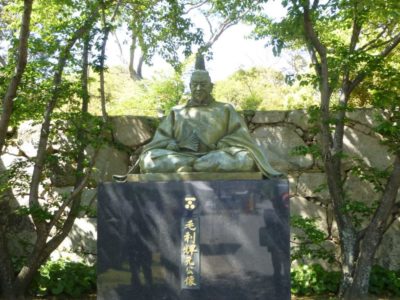
Hagi was governed by the feudal lord Mori from the 17th century. The Mori clan used to have one of the largest territories in the Hiroshima area. There was a large civil war in 1600. Mori was the main lord of the western team while Tokugawa Ieyasu was the leader of the eastern team. The eastern team won the battle, and Tokugawa Ieyasu became the shogun in 1603.
Tokugawa made big reforms in the Japanese domain system. As a result, Mori was sent to the smaller territory of Hagi and lost power. But the successive Mori lords were good politicians and the family lasted until the end of the Edo period in 1867. The next period was the Meiji Restoration which is when the feudal system was abolished. Mori contributed a lot to the Meiji Restoration that eventually terminated the Tokugawa Shogunate.
Shizuki Castle Park
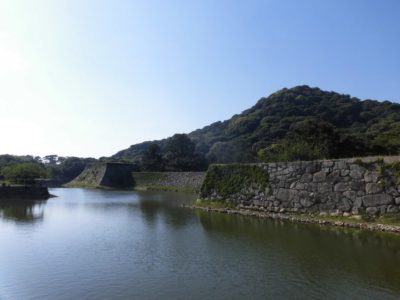
Unfortunately, there is no castle building left in Hagi. After the Meiji Restoration, most castles in Japan were demolished because the new government didn’t want to leave symbols of feudalism. So Hagi Castle was demolished in 1874.
But the castle ground was left as a park called Shizuki Park. If you visit the park, you will understand the strong defense mechanism of the castle. The castle ground is in the peninsula. There is a mountain in the north, and the western and eastern sides are the ocean, so the castle was protected from the three sides by nature. Also, the moat was constructed in the south. The mountain is called Shizuki Mountain which is 143 meters high, and a watchtower was constructed on top of the mountain. So if enemies tried to approach the castle, it was easy to see them come from afar.
Though the castle tower is no longer there, the stone base of the main tower remains and you can go up there.
Tokoji Temple
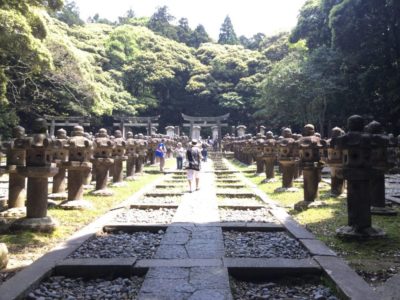
The Tokoji Temple was one of the family temples of the Mori clan. There are 10 big graves which are for Mori lords Third, Fifth, Seventh, Ninth, Eleventh, and their wives. Another Mori family temple called Daishoin is for the even number lords’ graves.
Behind the old Zen temple, there are two graveyards. The one closer to the temple is for the vassals who contributed to the Meiji Restoration. Another one further behind the temple is for the lords. It is an amazing view of 500 stone lanterns in front of the gravestones which were donated to the Mori lords by their vassals.
Shoin Shrine
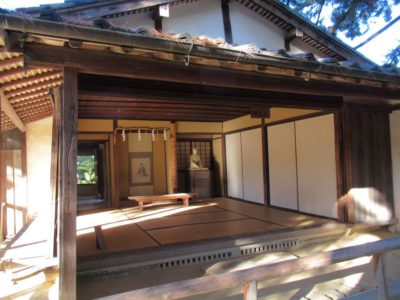
Yoshida Shoin was a great teacher, philosopher, samurai, military scientist, and adventurer. He was born in 1830, almost at the end of feudal time. Yoshida studied western military science and tried to go on a foreign ship because he wanted to see the world by himself. He failed and was arrested at his home in Hagi.
While he was in Hagi, he taught many young ambitious samurai. He was a teacher, and he emphasized critical thinking and having ambitions. Later he was put into jail because he spoke badly about the Tokugawa Shogunate and got the death penalty. But his students later made great contributions to the Meiji Restoration that made the revolution successful.
In the Shoin Shrine precinct, they preserve the small school ‘Shokasonjuku’ where Shoin taught young people.
Hagi Old Town
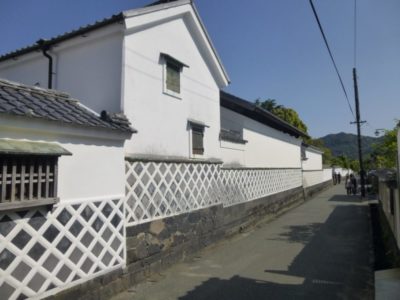
In many places in Hagi, you will see well-preserved old walls. The wall with the orange tree is like a symbol of Hagi. Growing oranges started after the Meiji Restoration. Samurai lost their jobs and the governor at that time recommended them to grow oranges and it was successful. So oranges and sweets using oranges have become one of the gourmet specialties of the town.
In the Bukeyashiki district, some old merchant houses are open to the public as a museum. Kikuya Residence is the biggest and most interesting one to learn about the town’s history and culture.
Hagi Pottery
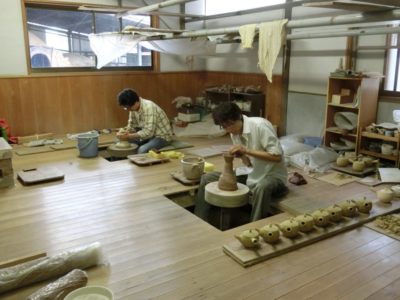
There are many kilns and pottery shops in Hagi. Hagi pottery is very simple. They don’t use many colors. One of the characteristics of Hagi pottery is ‘kannyu’, which has small cracks in the glazing that form during the firing. When you drink tea from a kannyu mug every day, the color will slightly change. People who love Hagi pottery enjoy this change.
You can see exhibitions featuring Hagi pottery in several places. Hagi Prefectural Museum is one of them. You can see modern-style Hagi pottery as well as traditional work.
Yoshiga Taibi Museum is also a nice museum. Next to the museum, there is a workshop and kiln which are still used today. You can buy their products at their cool souvenir shop, too.
Your Japan Tour
As seasoned Japan experts, we create perfect Japan package tours including destinations like Hagi. Check out our group tours and private tours, or contact us to start planning your unforgettable holiday to this fascinating country full of once-in-a-lifetime experiences, culture, history, nature, and delicious food!
Hagi Information
Access to Hagi Station (JR): from Shin-Osaka Station: Take Shinkansen (bullet train) to Shin-Yamaguchi. Then take a bus to Higashi-Hagi. It takes about 4 hours.
From Hakata Station: Take Shinkansen (bullet train) to Shin-Yamaguchi. Then take a bus to Higashi-Hagi. It takes about 3 hours.
In the city, each sightseeing places are spread out a bit. It is comfortable to use a rental cycle from Higashi-Hagi Station to go around town.